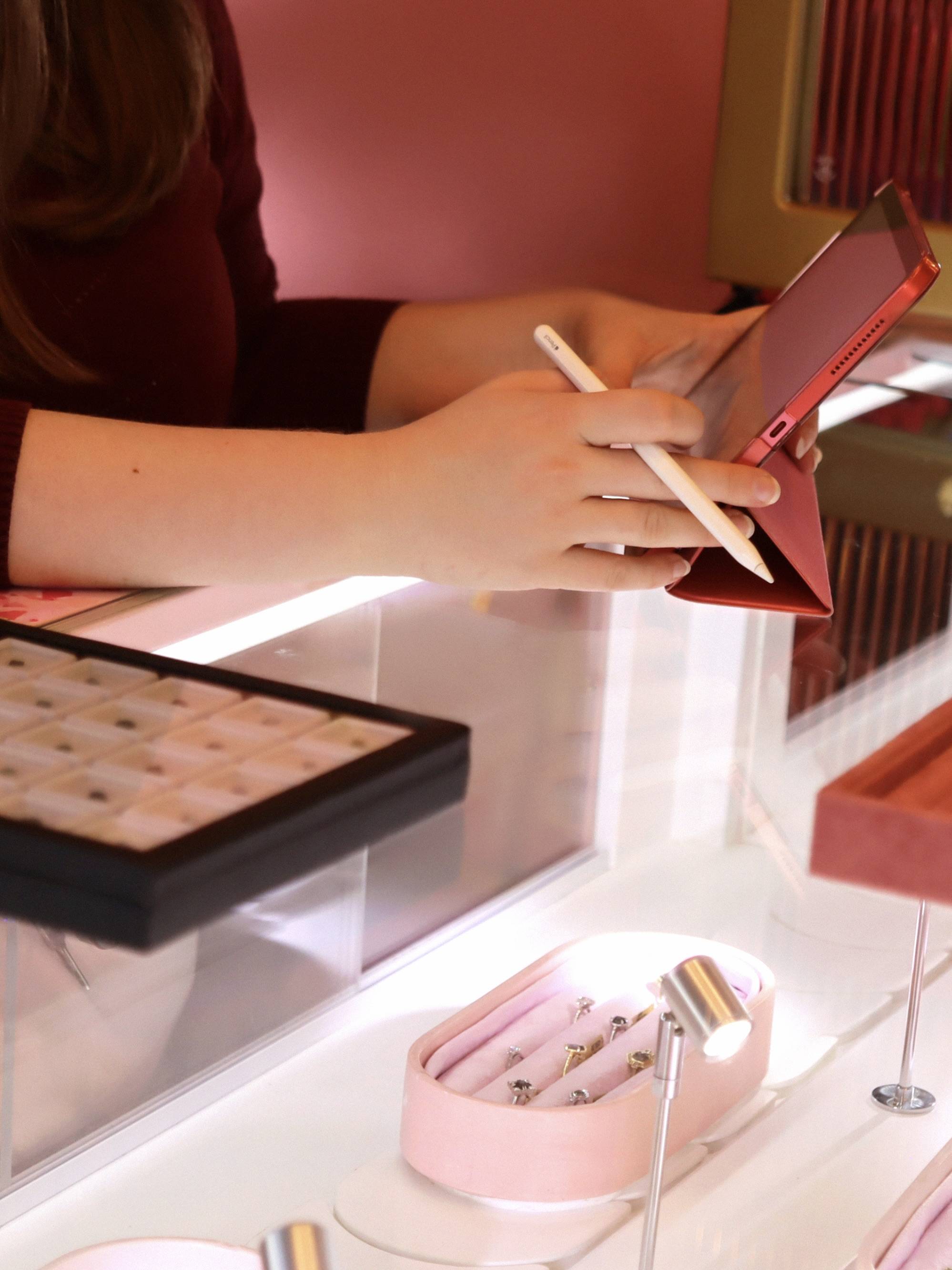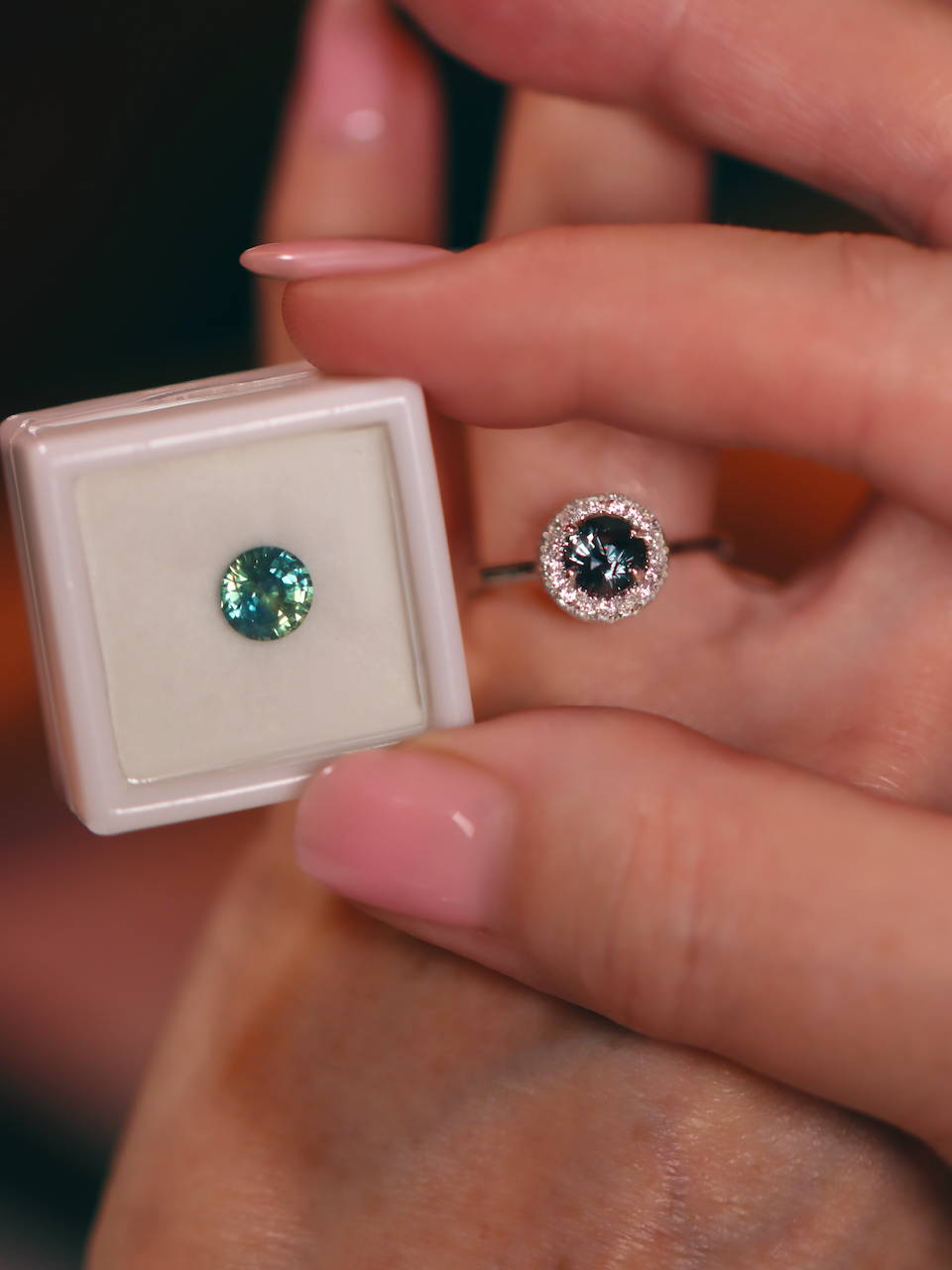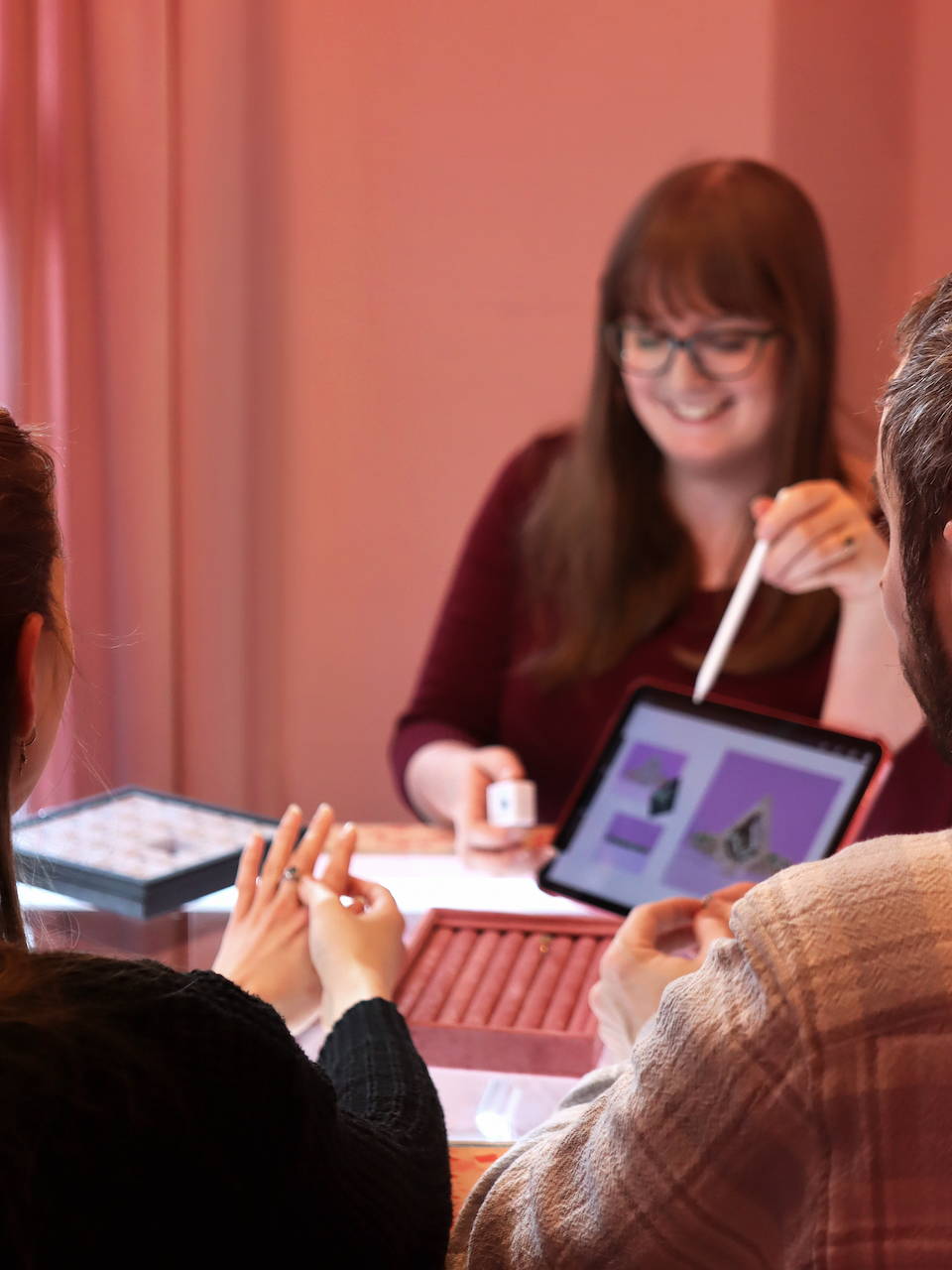GEMSTONE GUIDES
Amethyst Gemstone Guide

From ancient civilisations to modern jewellery designs, amethyst has captivated hearts with its stunning purple hues and spiritual significance. In this guide, we embark on a journey to explore the allure of amethyst, delving into its origins, properties, metaphysical attributes, and diverse uses in jewellery and beyond.

GEMSTONE GUIDES
Amethyst Gemstone Guide
From ancient civilisations to modern jewellery designs, amethyst has captivated hearts with its stunning purple hues and spiritual significance. In this guide, we embark on a journey to explore the allure of amethyst, delving into its origins, properties, metaphysical attributes, and diverse uses in jewellery and beyond.
What is Amethyst?
Amethyst belongs to the quartz family, known for its captivating purple coloration ranging from light lilac to deep violet. Amethyst is valued for its beauty, durability, and spiritual significance, making it a popular choice for jewellery and decorative purposes. It has been cherished throughout history by various cultures for its supposed healing properties and association with spiritual enlightenment and inner peace.
Amethyst Meaning
Amethyst is an ancient gemstone with a rich history. It's often associated with qualities of spirituality, protection and wisdom. It also has links to royalty and nobility, as it symbolises power and luxury.
Amethyst also believed to possess cleansing and purifying energies and even has ties to ancient legends through the Greek god of wine, Dionysus who wore amethyst as an amulet to ward off intoxication.
Amethyst is also the birthstone for February! It is considered a lucky stone and is said to protect the wearer from dark energy while attracting happiness and wealth.
Create Your Amethyst Jewellery
If you're in search of exquisite amethyst jewellery, don't hesitate to reach out to our team of design experts. We're passionate about collaborating with you to bring your dream amethyst piece to life.

Amethyst Value
The value of amethyst can vary based on factors such as its colour, clarity, cut, and carat weight. Generally, deeper and more vibrant purple hues are considered more valuable, especially those with minimal inclusions and excellent clarity. Larger carat weights are also rarer and therefore command higher prices.
The gemstones country of origin can also influence the value, with some countries such as Brazil known for producing amethysts with more intense colour saturation. Overall, amethyst is generally more affordable compared to gemstones such as sapphires or rubies, so its a great choice if you're looking for a colourful gemstone with a more accessible price tag.

Amethyst Hardness
Amethyst has a hardness of 7 on the Mohs scale, making it relatively durable and suitable for everyday wear. This level of hardness indicates that amethyst is resistant to scratching and abrasions from most common materials, but it's still important to handle it with care to avoid damage.
While amethyst is sturdy enough for regular wear, we always advise avoiding exposing it to harsh chemicals and extreme temperatures, as these can potentially affect its appearance and durability over time.

Amethyst Rarity
While amethyst is not considered rare in terms of availability, the value and desirability of amethyst can vary based on factors such as colour, clarity, and size. Some amethysts with particularly intense and vibrant purple hues or unique inclusions may be considered more rare and valuable. So, while amethyst is not classified as rare in the gemstone world, individual specimens with exceptional qualities can still command high prices among collectors and enthusiasts.
Lab Grown Amethyst
Lab grown amethyst, created through controlled laboratory processes, offers a sustainable and consistent alternative to natural amethyst. These stones are created when scientists mimic the natural conditions where mined amethysts form, meaning that lab grown amethysts have the exact same physical and visual properties as natural ones!
Lab grown gemstones also ensures quality along with consistent colour and clarity, free from imperfections. They are also a more environmentally friendly choice as they avoid the need for mining, which means lab amethysts are also a lot cheaper than mined ones.
Where Do Amethysts Come From?
Amethysts are found all over the world, with lots found in Brazil, Zambia, Uruguay and Russia. Different countries are known for producing amethysts of different colours, sizes and tones. For example, Brazil is renowned for producing amethyst with deep purple hues and excellent transparency, often in large crystal formations. Zambia produces amethyst with a rich purple colour and distinctive reddish or bluish flashes known as "Zambian eye" or "red flash" amethyst. Russia is recognised for its amethyst with a reddish-purple hue, known as "Siberian" amethyst, which is highly prized for its rich colour and clarity.
Amethyst Colours
Amethyst is known for its captivating range of purple hues, spanning from delicate lilacs to deep violets. While some are clear and hold just one tone, others showcase intriguing variations and patterns, adding to their unique beauty. From soft pastels to rich, saturated tones, each amethyst gemstone possesses its own distinct charm.

Caring for Your Amethyst
To clean amethyst, gently scrub it with a soft brush or cloth using warm, soapy water, and then rinse thoroughly. Avoid exposing amethyst to harsh chemicals, including household cleaners and cosmetics, as they can damage the stone's surface. You should also protect amethyst jewellery from extreme heat and prolonged exposure to sunlight, as this can cause fading or discolouration. Take a look at our ring care guide to learn more about how you can make sure your alexandrite jewellery stays as gorgeous as the day you bought it!
Amethyst ranks at 7 on the Moh's scale, meaning its pretty tough but still susceptible to scratches and damage. Therefore, you should always make sure to store amethyst pieces separately from other jewellery to prevent scratches, ideally in a soft pouch or lined jewellery box.
Visit Us
At Jessica Flinn, we pride ourselves on creating a friendly atmosphere where all are welcome. If you book an in person appointment with us you will be welcomed into our beautiful showroom with a beverage of your choice, whether its a cup of coffee or a glass of champagne, we're here to make your appointment as memorable as possible. One of our experts will then guide you through the ring choosing or designing journey and make sure you leave with a ring you absolutely adore!
Book an appointment today and start your journey.







